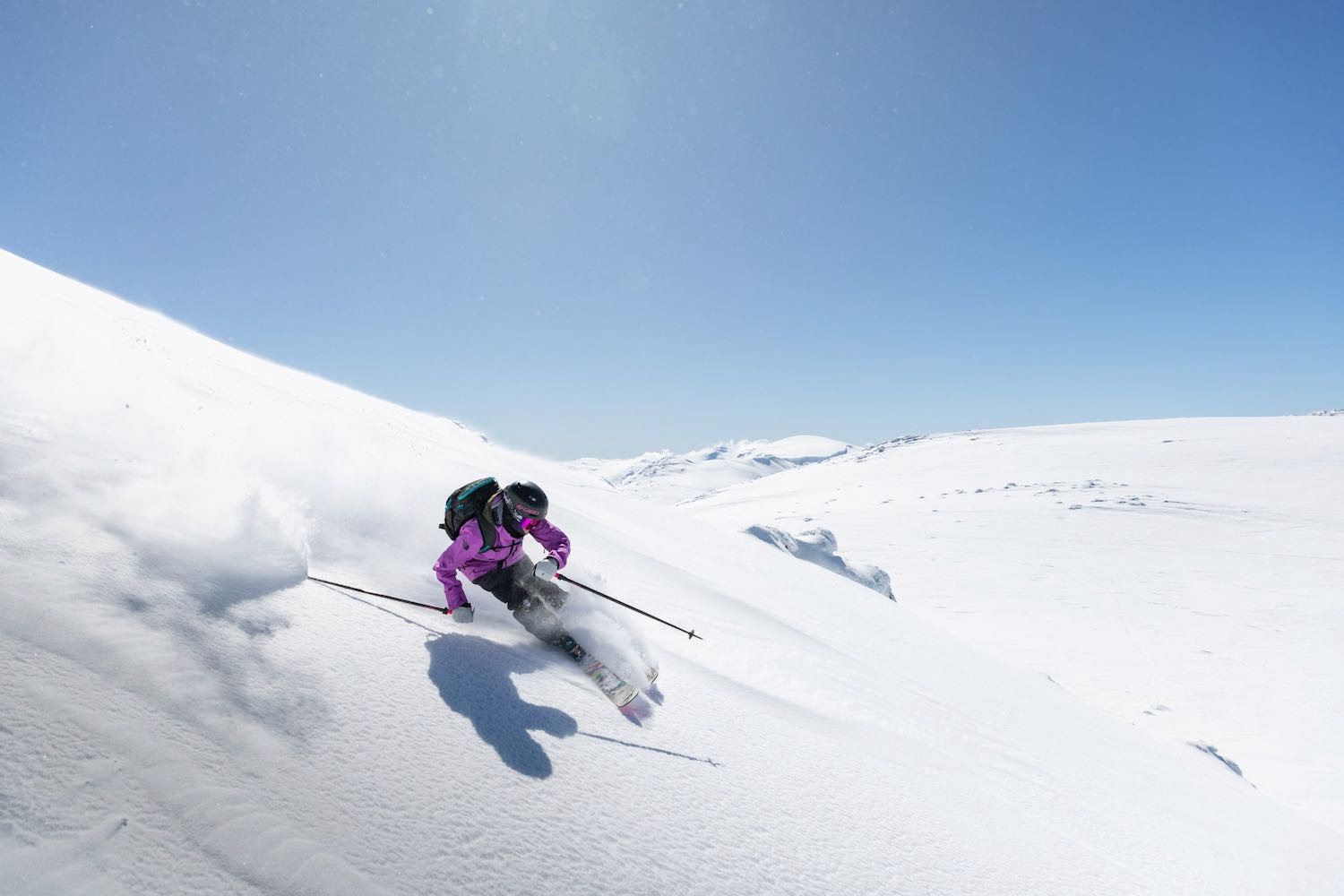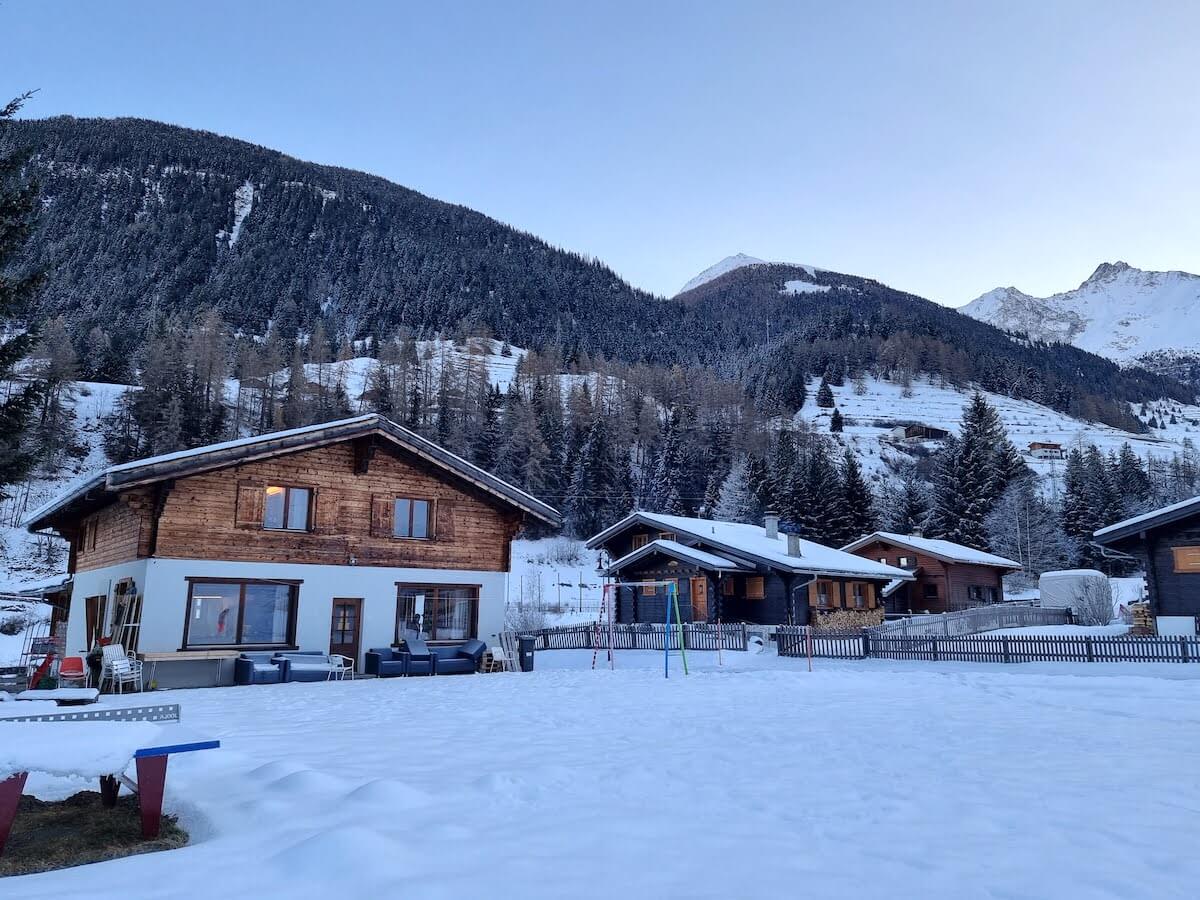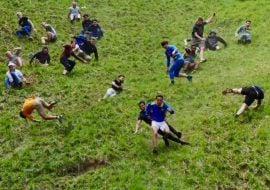Ten Things I Learnt About Backcountry Skiing The Hard Way


What to know before you go Backcountry Skiing
More accustomed to in-resort skiing but restless for something new, I headed out for a couple of ski touring days at Australia’s Dead Horse Gap and Mt Wheatley. My out-of-resort ski experience consists mostly of ‘side country’ in Utah, BC and Japan, if I need to hike up to access great powder I strap skis to my backpack and trek up in ski boots. The avalanche transceiver has been my constant friend because of where I like to ski and a day of ski touring for my Avalanche level 1 was the only skinning experience I had.
Fitness
Fitness is not just fitness when it comes to backcountry skiing. Considering myself fit, running and strength training a few times a week I was badly puffing out after 15 minutes.
It seems the best kind of training is walking hills pre-trip with heavy backpack, replicating tough conditions that running and regular weights just don’t cut.
Alex Parsons, Thredbo’s Head backcountry guide says:
Backcountry touring requires a mix of cardio and strength – and then the ability to do it for hours on end. There are few sports that require as much endurance as backcountry touring and it’s hard to train for. But building a solid foundation of strength (don’t be afraid of heavy weights – barbells are your friend) and then adding cardio is a good start.
The problem is that an hour in the gym each day is simply not enough. Most touring days are 6-8 hours of constant moving, so trying to add in as much activity every single day is key. Walk at lunch, take the stairs, and have active hiking and swimming weekends! At the end of the day though only touring can get you truly touring fit, so don’t be too hard on yourself!

Alex Parsons, Thredbo’s Head backcountry guide
Skis
I was happy to use old powder skis with touring bindings and old skins because I’m not ready to invest yet. I could certainly see a huge difference in skis and the technology has certainly changed by the looks of my friends’ setups. New bindings are lightweight and slimline these days, as are skis made specific to backcountry touring, cutting through virgin snow and not cumbersome.
I felt every kilo of my retro kit in my hip flexors muscles when skis glide forward uphill. One benefit I observed having heavier skis than my buddy was during our pre-Mt Wheatley fun skiing in-resort. Her lighter skis chattered noisily on groomed runs and it makes me consider adding touring bindings to my powder skis so I can move easily between in-resort and out of resort functionality.
Alex says:
Technology has certainly come a long way and skis and bindings come in ultra lightweight versions. But you’re right – how light is too light? I’ve had a few guides say they prefer a heavier ski and binding so they can enjoy the downhill more instead of chattering about and feeling every little bump.
It’s personal preference at the end of the day. Some will want to do 20km sufferfests with the “light and fast” mentality, whereas others are happy to compromise with a heavier setup for more comfort on the downhill.
Layering
People say layering is important, often without explaining the most important reason why. Sure, layering allows you to take your jacket off as you heat up but if you don’t get layering ‘right’ and you begin to perspire, you pay for it later when you’re in a sunless spot sitting or standing still and the perspiration on your skin cools and makes you shiver with extreme cold.
Alex says:
We often speak about the saying “cotton kills” because of its tendency to hold onto water and make you cold. Instead, merino and synthetic are the way to go so they can suck the moisture away from you.
Merino is expensive but the gold standard as the lightweight wool is odour-resistant and will keep you warm even when wet.
Gloves
Next time I would start out the day wearing only inner gloves for the same sweaty reason.
Functionality-wise, once my hands in my heavy ski gloves warmed up I stuffed them down my jacket, not wanting to hold everyone up. Then it became another ‘thing’ hanging off me, a bit of a nuisance.
Alex says:
It’s best to have inner gloves and ski gloves. Inners for the uphill and ski gloves for the downhill, as a general rule.
I’ll often bring two sets of each gloves in case I get too sweaty on a hot day or snow soaks into them on a cold day. Freezing, sodden gloves just really suck.

Food
Hearing stories of people not eating enough then groaning with hunger, we packed food like we were going backcountry for a week, not a day. Wraps with ham and cheese, protein balls, a thermos of hot chocolate, apples and eggs.
One of our mates packed miso soup and trail mix, at age 61 he skinned up the hill like a mountain goat. There may be something in that combo to learn from.
Alex says:
Food is so hard to get right! It can take a while to figure out how you work but a nice mix of sweet and salty is a good start. Cheese and crackers, salted nuts, feta pasta, chocolate biscuits and cliff bars are my standard.
Not eating enough, frequently enough can be the cause for a major crash later on. I try to eat a little at every stop, make sure I’ve had a massive breakfast and when I get back to the resort or home, I have a calorie dense meal. Poutine is my go-to.
Supplements
Taking the necessary precautions to ensure your body is ready for a backcountry skiing trip can be overwhelming, but the best place to start is with your exercise routine! Exercise helps you build strength, develop skills, and even prevent injury. To get a few extra gains, consider including some dietary supplements in your exercise routine when prepping for a backcountry skiing trip.
Nitric oxide supplements can help enhance muscle repair and growth so your body will be strong and healthy on the day of your ski trip. Although supplements should not take the place of regular, healthy eating, they can give you that extra little boost to make sure you’re looking forward to hitting the slopes in no time!
Neck Warmer
My thick neck warmer was another item that got way too hot and made me sweaty after 10 minutes of uphill walking.
There is a reason ski tourers prefer the very lightweight, thin synthetic gaiters. They are versatile enough to wrap around the head or stretch into various positions and keep cold and wind out surprisingly well.
Alex says:
Absolutely! The thin ones are best and very versatile.
Transceiver
In the past I skied USA and Canada with my transceiver strapped to my chest out of sheer habit. I used to feel naked without it but 2 Covid seasons of in-resort only skiing meant I fell out of the habit. So much so that I had to YouTube how to turn my transceiver on and off to remind myself.
Due to a mad 6am scramble to wake and exit my accomodation in the dark, I could not locate my transceiver anywhere. Knowing I was keeping people waiting I ditched the search for it. Possibly the most important item of the day, it was a bad move and next time I’ll leave it next to my boots the night before.
Alex says:
A beacon, shovel and probe are they trifecta of touring and I’d avoid going with anyone that doesn’t have these (knowing how to use them via an AST1 of similar is equally important).
Many think avalanches don’t happen in Australia but I can think of half a dozen major avalanches that have happened this winter alone, so having your transceiver is essential even in Australia. It’s also ideal habit building towards skiing overseas.
Team
We had a great team, including 2 male mates based in the Snowies for the season who get out backcountry a few times a week and my female friend and I.
We also had an extremely hungover mate on the team, he self-monitored himself by heading back to the car to sleep it off after an exerted stint on skis that made him ill, but next time I need to tighten the team by discouraging anyone hungover to come along.
Alex says:
Building the right team is essential! You want good vibes, similar mindset, high safety and similar goals.
A team of 2-4 seems to be the right number. It can take a few years to find the people that work with you.
Water Carry System
The bottle or the Camelbak? I chose the Camelbak for the 2 litre holding aspect but found carrying its extra mini backpack under my usual backpack cumbersome. The first morning the hose feeding the water froze a little.
During a break I fiddled with the hose tucking it into its pouch. Between the Camelbak, neckwarmer, gloves and layers the day was marked by lots of equipment fiddling on my behalf. Learn what not to do from me and fix it right first go.
Alex says:
A very important question. Pro tip: bring both. A bladder is a game changer for staying hydrated on the go but on cold days the hose will absolutely freeze. That’s why we often have another stash of water in our packs. Nalgenes are the outdoors gold standard.

Photo credit: Thredbo Resort
Skins
I had the retro skins, still working solidly from 18 years ago but the glue was super sticky, sticking the two halves together and with an 8 month long elbow injury, it was a struggle.
One of the guys showed me the simple trick of folding the two halves in on each other, shortening the work of unsticking the skins every time. This is something I would not have known had I not been with these more experienced backcountry skiers.
Alex says:
Ah, the skin game. Guides have all sorts of little tips and tricks: Having your skis vertical when putting them on. Letting them dry out in the sun on slushy spring days. Using skin wax. Not using ski savers. So many! But everyone is different.
Pin Binding System vs Regular Boot
Still unsure of my next backcountry purchase, the pin system requiring a whole new designated boot and expense but my entire back country team all had this pin system and it appeared to work well for them.
Still unsure, an old friend of mine, an experienced Australian ex-ski team member and Japan ski guide advised me that the pin system doesn’t always ‘hold’ in conditions working my skiing to the limits, such as deeper or heavier snow. So now I’m thinking my current boots, (buckles undone at the shins for uphill skinning, buckled up for downhill skiing) will surely suffice.
Alex says:
Frame bindings, pins, shifts… They all have pros and cons. I’ve seen guides use them all. Best to dive into some reading, ask around and try before you buy. But hey, what would I know? I’m a splitboarder.
Super excited to get out backcountry skiing as soon as possible as the uncrowded slopes, silence of the mountains and the camaraderie of heading out for an adventure with mates has taken hold as my new addiction.
Feature image credit: Thredbo Resort
Last updated on Jan 20, 2023Have you subscribed to our Newsletter or Podcast? Listen to us on Apple Podcast and Spotify and follow us on Facebook, Instagram Twitter and YouTube.
Accommodation near Thredbo, Australia
Rad Season is providing you with rentals and hotels at the lowest prices available online. Book your stay near Thredbo, Australia using the map below!








